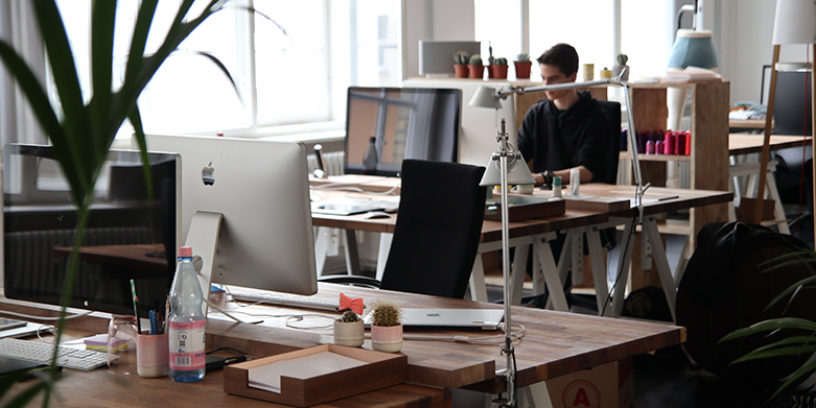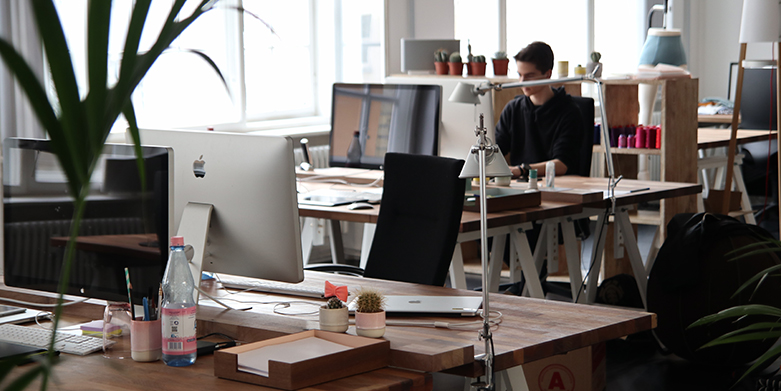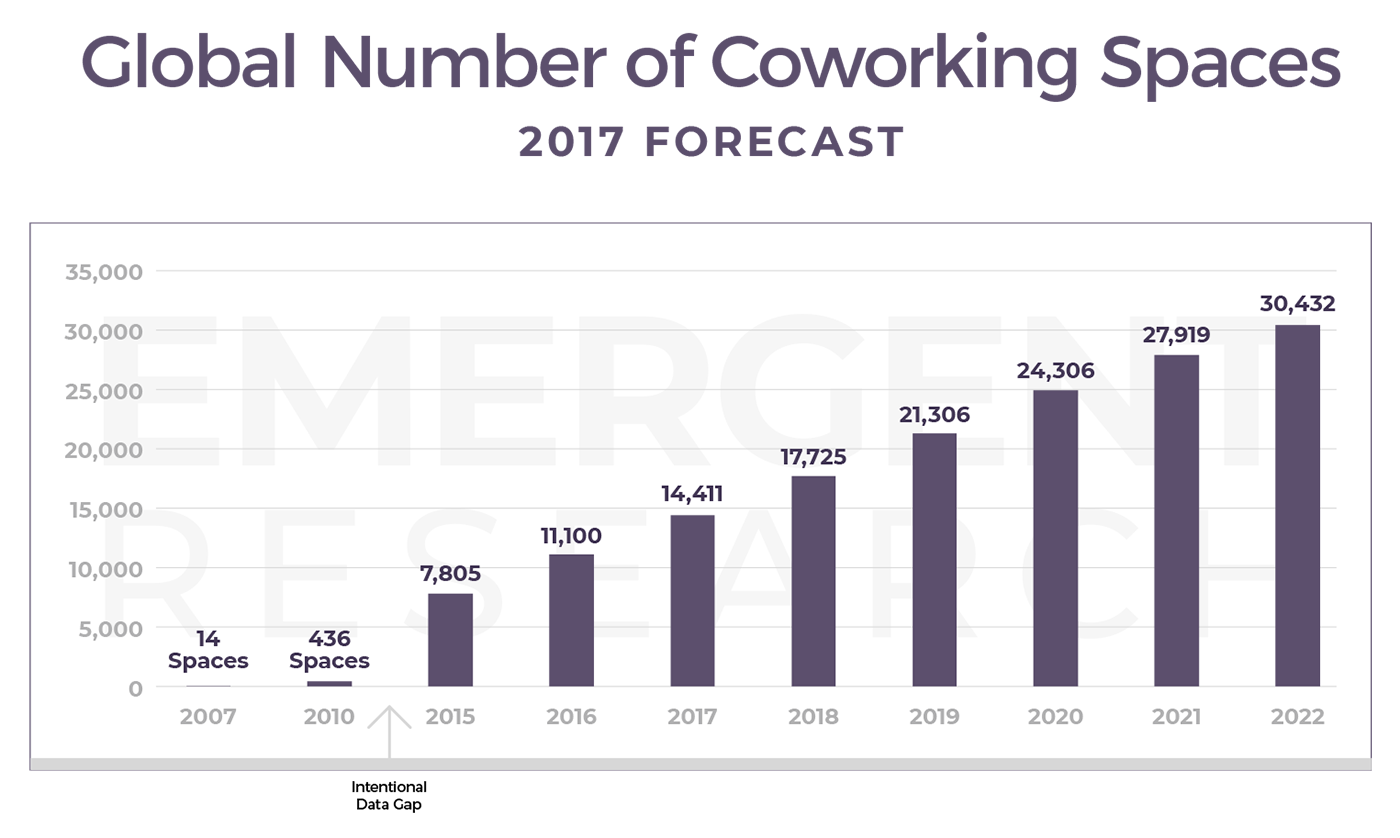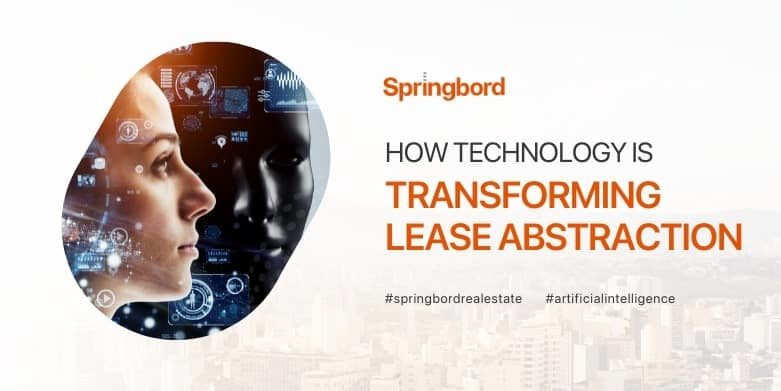 Read time 2 min
Read time 2 min
Co-working is on the rise and has been drastically changing the way we use office spaces. It is no longer restricted to startups and small enterprises and is now a hot topic for the entire corporate real estate industry. According to a survey conducted at the CoreNet Global Summit 2018 in Boston, over the span of next five years, corporate real estate professionals are expected to dramatically increase their use of co-working spaces. The survey results also revealed that the percentage of employees at respondents’ organizations using co-working has doubled over the past two years.

Co-working spaces getting bigger
The co-working member growth is astounding and it is predicted to continue growing for the next few years. According to Global Co-working Forecast, there will be 30,432 spaces and 5.1 million members by 2022, of which over one million workers will be in US alone. These co-working members are not just tech professionals and startups but also freelancers, part-time workers and small enterprises joining the co-working world. The rapid growth of co-working community is attributed to the fact that co-working getting bigger in square footage as well as members per square foot.
Open Houses and Campsites
Apart from the co-working spaces for individuals and business partners, there are two more types of corporate co-working spaces. One is Open Houses, in which the companies typically offer workspace as a public amenity, usually for brand-building. Some of the open houses offer a combination of working space, café, labs, etc. The other type of co-working space is Campsites where invitation-only work space is made available to teams from one company that want to co-locate with workers from another company. Usually campsites are temporary and help workers to network, collaborate and learn from across corporate boundaries.
The Global Summit 2018 – Boston
The session on co-working during the Global Summit in Boston last month (October) highlighted the underlying “trend lines” that are driving the change in corporate real estate realm and the implications these changes will have on the future of workspace strategy. The session speakers further described how landlords such as Brookfield, Blackstone, and One World Trade Center are counting on flexible workspaces and explored the implications of smart building technology on workplace strategies as well as tenant experience.
Co-working is on the rise and drastically changing the way we use office spaces. The recent growth of co-working spaces has been phenomenal and it isn’t going to slow down any time soon.







